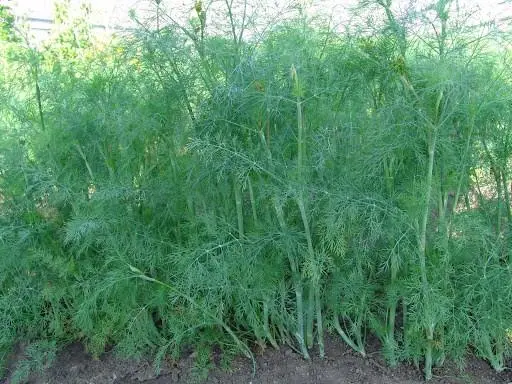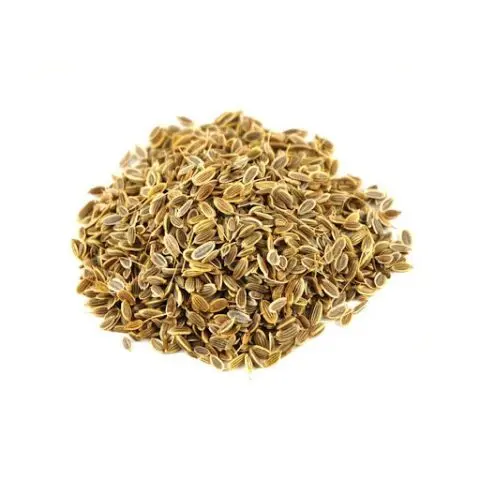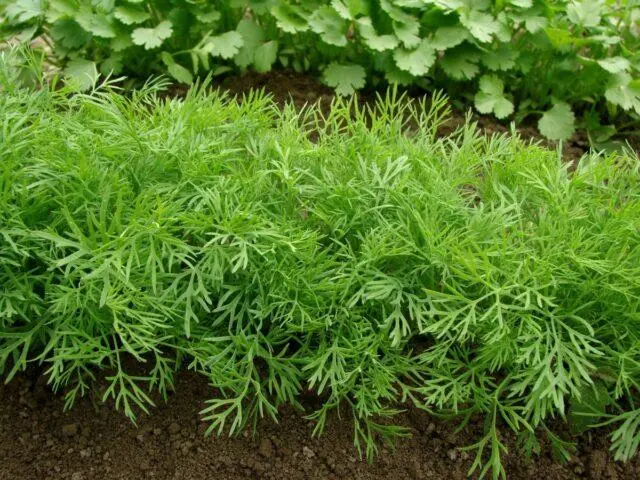Contents
Sowing dill in spring in open ground is planned no earlier than mid-April. It is necessary to wait until the soil warms up to at least 5 degrees Celsius. If you want to get an early harvest, you need to grow seedlings.
When to plant dill in spring in open ground
It is necessary to plant dill in the spring in open ground with seeds at a time when the weather has been positive for several days. You should focus on the condition of the soil. You can start planting when the top 10 cm of the ground warms up to +5°C. Checking this is quite simple – you need to bury the thermometer and wait 10-15 minutes. It is difficult to name specific planting dates in the spring, since they depend on weather conditions and the climate of the region.
According to the lunar calendar 2022
If you choose a landing day according to the lunar calendar, you should pay attention to favorable dates. In March 2022 they fall on the following days:
- 1-3;
- 7-10;
- 15-16;
- 19;
- 22-24;
- 27;
- 29-30.
Auspicious days in April:
- 4-7;
- 12;
- 14;
- 17-23;
- 25-26;
Optimal dates in May:
- 1;
- 3-6;
- 9-11;
- 17-18;
- 21-22;
- 24;
- 27-28;
- 30-31.
Important! Unfavorable days traditionally fall on the full moon. In 2022, dill and other crops should not be planted on the following dates: March 18, April 16 and May 16.
Depending on the region
If you give an approximate time when it is right to sow dill in the spring in open ground, it will be mid-April. Experienced summer residents note that seeds in the open field germinate well when the temperature is consistently above 15 degrees.
In different regions of Our Country, the timing of planting in the spring is very different:
- in the south, you can start work as early as the end of March;
- in the middle lane – in the second decade of April;
- in the North-West, the Urals – at the end of the month;
- in Siberia, in the Far East – until mid-May.
Site Selection
Before planting dill in the spring in open ground with seeds, you need to choose a place for the garden. The plant is unpretentious, the main requirements for the site are:
- good lighting, no shadow;
- without stagnant water (lowlands should not be considered);
- fertile soil with a loose structure.

Dill does not require special growing conditions
Greens grow well enough on different soils. But loam with a neutral or slightly acidic reaction is best suited. At the same time, the place for planting in the spring should not be shady – otherwise the stems will be weak and thin, there will not be so many essential oils in the dill, which will have a bad effect on its aroma.
Preparation of beds
Before planting dill seeds in open ground in spring, it is necessary to prepare a garden bed. Work should begin in a few months – preferably in the fall, and if the deadline is missed, then in early spring. The main activities are as follows:
- Clear the area from debris.
- Dig a shovel onto a bayonet.
- Make compost or humus in the amount of 7-10 kg per 1 m2.
- If there is a lot of clay in the soil, also close up sand or sawdust up to 5 kg per 1 m2.
If there is no organic matter, you can close up a complex mineral fertilizer – 40-50 g per square meter. It also happens that the soil is too acidic. Then, before planting, wood ash is added to it in the amount of 200-300 g for the same area.
The beds themselves are not made very high, creating a mound of 10-12 cm. Sides are formed along the edges. The area for planting in the spring should be such that at least three rows fit.
Preparation of dill seeds
Dill seeds are coated with essential oils, which interferes with germination and can reduce germination. In addition, not all grains will sprout. Therefore, before planting in the spring, they should be properly prepared by following several steps:
- Take a heaping tablespoon of salt and dissolve in 1 liter of warm water. Put the seeds in and if any of them come up, remove them.
- Soak the grains overnight in warm water with a few drops of growth promoter. You can use “Heteroauxin”, “Zircon”, “Epin” or other drugs. If they are not available, it is recommended to use aloe leaf juice diluted with water twice.
- Before planting, seeds should be etched in a pink solution of potassium permanganate for three hours or in a 3% hydrogen peroxide solution for about five minutes.
- Next, the grains are placed on a damp cloth, covered with a second layer and germinated for several days. Then they are sown directly on the bed.

Planting material is pre-soaked and pickled
How to sow dill in spring in open ground
Most often, seeds are sown directly in open ground. Dill develops quite quickly, and greens can be removed after 1-1,5 months. But in the northern regions, planting through the cultivation of seedlings is also allowed. In this case, the seeds are sown in boxes from the end of March to the first decade of April. And they are transferred to the garden in early May, when the threat of return frosts will be minimized.
Planting dill in spring in open ground with seeds
To land correctly, you need to act like this:
- Level the surface of the soil, water lightly.
- Mark several shallow rows up to 1 cm with an interval of 15 cm.
- Spread the germinated seeds at a distance of 5 cm from each other.
- Sprinkle with soil.
There are other ways of planting: evenly distribute over the surface of the soil, and then sprinkle with earth and water. But in this case, the landing in the spring will turn out to be too dense. Therefore, the shoots that have appeared will definitely have to be thinned out.
Proper planting of dill seedlings in spring
It is possible to plant a plant in the spring and for seedlings. Sowing begins in the third decade of March. First you need to prepare the ground. It is based on garden soil with peat, compost and sand in a ratio of 2:1:1:1. You can also purchase universal soil for seedlings. Dill grows well in loose and nutritious soil, does not require special conditions.
Boxes for planting seedlings in spring should be wide enough and shallow (12 cm high is enough). They are pre-disinfected in potassium permanganate. In the same way, you need to cultivate the soil. Instead of a potassium permanganate solution, the soil can be kept in the freezer for several days or put in the oven for 20 minutes at a temperature of 120 degrees.
Next, several holes are made in the containers for drainage and the soil is laid out. When planting in the spring, they act like this:
- Dill seeds are pre-prepared as described above.
- Then several furrows are formed on the surface up to 1 cm deep at a distance of 10 cm.
- Spread the seeds at intervals of 2-3 cm.
- Moisturize with a spray bottle.
- Cover with a film with holes or transparent glass.
- Leave on the windowsill or on the rack, the temperature should be at room temperature.

The optimal distance between rows is 20 cm
In the first week, the film is periodically removed for ventilation, watering is done. After the mass emergence of seedlings, it is completely removed, and after another week they are thinned out or picked into peat pots. They are easiest to transplant into the garden. The transfer to a permanent place begins no earlier than the beginning of May.
Further Care
Dill is a rather unpretentious plant, so after planting in the spring it does not require special care. If the soil is fertile enough, you can fertilize 1-2 times per season. It is best to use a nettle infusion that has been fermented for five days. You can also give an infusion of mullein 1:10 or chicken manure 1:20. The use of nitrogen compounds is not recommended, since dill accumulates nitrates, and such greens will be less beneficial to health.
One of the basic rules for caring for dill after planting is regular and fairly plentiful watering. If there is no rain at all, water is given weekly, and if hot, dry weather sets in, twice as often. At the same time, water is poured abundantly, 2-3 buckets per square meter. The best option is to install a drip irrigation system. In any case, water should be used settled – chlorinated from the tap can harm plants.
The soil must be regularly loosened so that a dense crust does not form. If this is not done, the roots of the plant after planting in the spring will not receive enough oxygen. Weeding is especially important to do in the first month. It is required to regularly remove weeds so that they do not take nutrients and water from the crop.
It is also recommended to periodically pinch the growing points to form side branches. This is especially necessary if the central trunk is strongly extended. As soon as the greens have become lush enough, they are cut with a sharp knife. If you need your own planting material, a few bushes are left for flowering and seed ripening.

In order for dill to give a good harvest, it must be regularly watered and fed.
Pest and disease control
When planted in spring, the plant rarely suffers from diseases and pests. But due to excess moisture, violations of feeding dill can suffer damage from infectious diseases. The most common are:
- Phomosis;
- blackleg;
- powdery mildew;
- fusariosis;
- peronosporosis.
To combat them, fungicides are used, for example, Bordeaux mixture, “HOM” and others. Of the pests, bugs, aphids, caterpillars and umbrella moths are especially dangerous when planting in the spring. They are fought with insecticides: “Karate”, “Inta-Vir”, “Fufanon” and others.
Conclusion
Sowing dill in the spring in open ground is a simple procedure that is accessible to any summer resident, even with minimal experience. To increase the germination percentage, the seeds are carefully prepared. Then they are planted in shallow grooves and sprinkled with soil. Then water regularly and fertilize occasionally.









